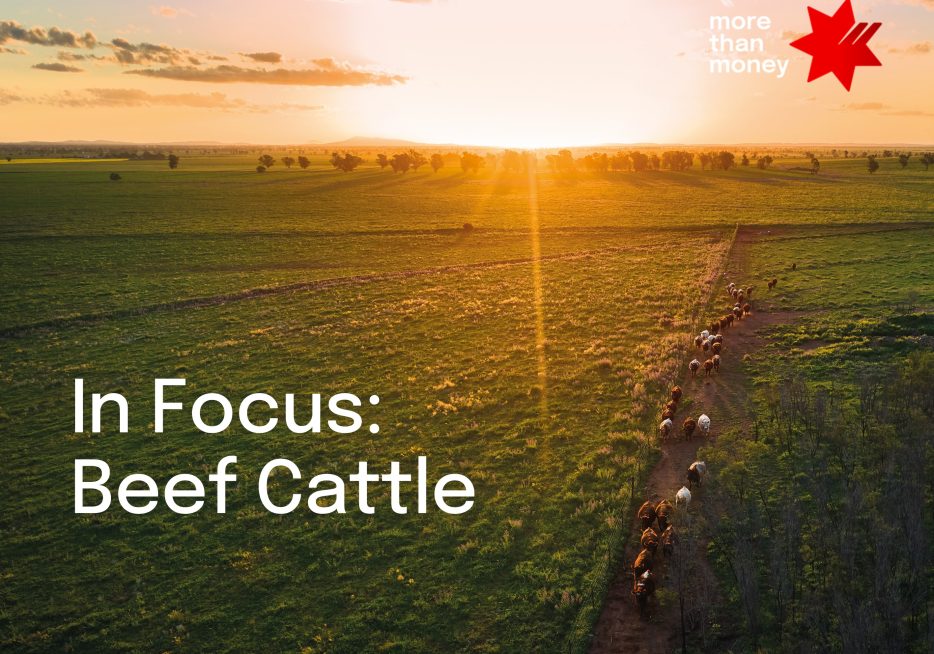Download NAB's latest In Focus Report - Beef Cattle

Report
The strength witnessed in last month’s NAB Monthly Business Survey continued into January, with both business conditions and confidence jumping to much higher levels.
While these outcomes are certainly pointing to an improvement in the domestic economy after a soft patch through much of H2 2016, a degree of caution should still be exercised given the diverse and rapidly changing seasonal influences at this time of year (which potentially includes the shift in Chinese New Year to January this year). Additionally, on-going weakness in retail conditions, despite an improvement in the month, raises some concerns about the underlying strength of household consumption. Looking further ahead, NAB Economics still have concerns for the longer-term growth picture, as the contribution from LNG exports, temporarily higher commodity prices and the residential construction boom fade, keeping pressure on the labour market. Nevertheless, in light of the recent flow of data, NAB’s economic forecasts (which include expectations for the RBA’s cash rate) are currently under review – to be published tomorrow.
Business conditions unexpectedly surged ahead in the month, pointing to very strong levels of business activity at present. The business conditions index (an average of trading conditions (sales), profitability and employment) jumped 6 points, to +16 index points, which is well above the long-run average for the series (+5). Meanwhile, business confidence also posted a stronger result in the month, rising 4 points to +10 index points, following the tone set by financial markets since late last year.
According to Mr Alan Oster, NAB’s Chief Economist, “recent strength in the NAB Business Survey is consistent with an anticipated rebound in economic activity, following the very weak Q3 2016 National Accounts. With that said, a confluence of seasonal factors suggests it is unwise to get too carried away with the result just yet, especially as some key industries remain fairly weak. As for business confidence, we suspect the enthusiasm in financial markets has helped a lot. If sustained, confidence at these levels could see firms revise up their capital expenditure and hiring plans.”
Outcomes for business conditions were quite varied across industries this month. As expected, wholesale gave back the surprising gains that were witnessed last month, but that was more than offset by improvements elsewhere. “A sharp deterioration in wholesale conditions was to be expected given that last month’s spike came as a surprise. However, it was encouraging to see improvements in some other key industries, which included mining and retail, both of which are no longer negative. However, the trend for retail is still very soft, which suggests the outlook for consumption remains cloudy”, said Mr Oster. Looking through monthly volatility, service industries remain the best performers.
Within business conditions, rising trading conditions contributed to the outcome yet again, but there was also a noticeable jump in employment conditions. Meanwhile, profits were unchanged at solid levels. According to Mr Oster, “the employment index has now hit its highest level since 2011, having previously been stubbornly muted for some time. This month’s jump in employment conditions bodes well for the generally underperforming labour market, and suggests stronger job creation than we have seen from the ABS in their Labour Force Survey lately.”
Leading indicators paint a mixed picture of the near-term outlook, however, with the forward orders index dropping – albeit remaining above the long-run average. In contrast to that, the capacity utilisation rate – which is relevant to future employment and capital expenditure plans – lifted in the month and more than unwound the decline seen last month. According to Mr Oster, “forward orders are pointing to modestly positive near term prospects for activity, although perhaps not enough to sustain this month’s spike in business conditions. Nonetheless, the lift in capacity utilisation rates is a relief in terms of the outlook for business investment and the labour market”
“The economy is expected to bounce-back from the negative growth seen in Q3 as the temporary factors that weighed on the economy wash out. The NAB Business Survey confirms the strength of that recovery, but its longevity may still be up for question” said Mr Oster. NAB Economics continue to have concerns for the longer-term growth picture, as the contribution of LNG exports, temporarily higher commodity prices and the residential construction boom fade, keeping pressure on the labour market. That said, in light of the recent flow of data, NAB’s economic forecasts (which includes expectations for the RBA’s cash rate) are currently under review – to be published tomorrow.
For full analysis, download report:
© National Australia Bank Limited. ABN 12 004 044 937 AFSL and Australian Credit Licence 230686.